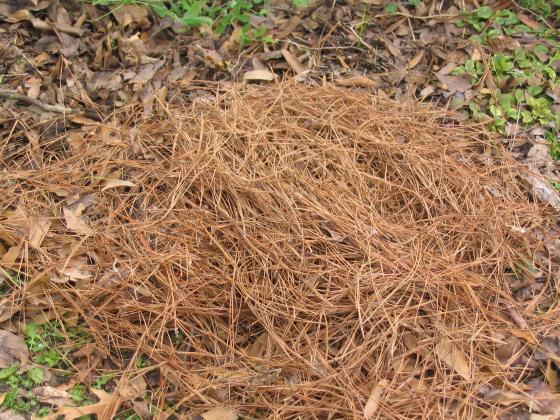
By: Rick Bogren, rbogren@agcenter.lsu.edu
HAMMOND – Expected cold weather often brings concern about protecting landscape plants during frosts and freezes. The best approach to protecting plants in winter is to pay attention to the weather forecasts and try to know a couple days ahead of time when a freeze is approaching, said LSU AgCenter horticulturist Allen Owings.
When preparing for colder temperatures, it’s important to keep in mind frosts and freezes are different, he said. And weather conditions prior to a freeze or frost play a role in how these temperatures affect plants.
“If the first cold event is a freeze, landscape plants will suffer more damage,” Owings said. “If several cold fronts move through the state and produce several frosts prior to a freeze, we will see less negative impact to plants that normally show damage.”
To prepare plants for a freeze, thoroughly water them if the soil is dry. This is especially important for container-grown plants, he said. Shrubs in landscape beds also can be helped with irrigation prior to a freeze.
It’s best, however, to make sure your shrubs received adequate irrigation or rain throughout fall. Strong, dry winds that frequently accompany cold fronts may cause damage by drying plants out, and watering helps to prevent this. Wetting plant leaves before a freeze does not, however, provide any cold protection.
If cold weather is in the forecast, move all tender plants in containers and hanging baskets into buildings where the temperature will stay above freezing, Owings said. If this is not possible, group container plants in a protected area, like the inside corner of a covered patio, and cover them with plastic.
For plants growing in the ground, mulch them with a loose, dry material such as pine straw or leaves.
“Mulches will only protect what they cover and are best used to protect below-ground parts and crowns,” Owings said.
Mulches also may be used to completely cover low-growing plants to a depth of 4 to 6 inches. “But don’t leave a complete cover of mulch on for more than three or four days,” he said.
Larger plants can be protected by creating a simple structure and covering it with fabric or plastic. The structure keeps the cover from touching the foliage, preventing broken branches and improving cold protection.
“It doesn’t need be anything more elaborate than driving three stakes slightly taller than the plant into the ground,” Owings said. The cover should extend to the ground and be sealed with soil, stones or bricks. Plastic covers should be vented or removed on sunny, warm days.
For severe freezes when temperatures dip into the teens, providing a heat source under the covering helps. A safe, easy way to do this is to generously wrap or drape the plant with small outdoor Christmas lights. The lights provide heat but do not get hot enough to burn the plant or cover.
Be careful and use only outdoor extension cords and sockets. If necessary, you may prune a large plant to make its size more practical to cover, he said.
“Keep in mind that your cool-season bedding plants are adapted to the normal cold winter temperatures, so cold protection typically is not needed,” Owings said.
